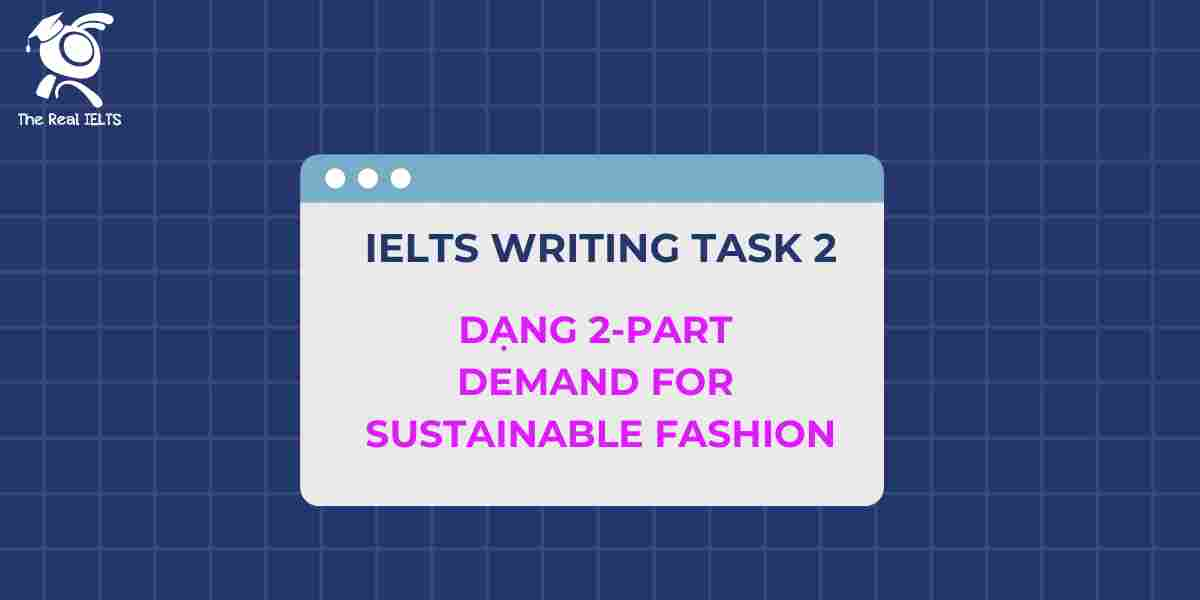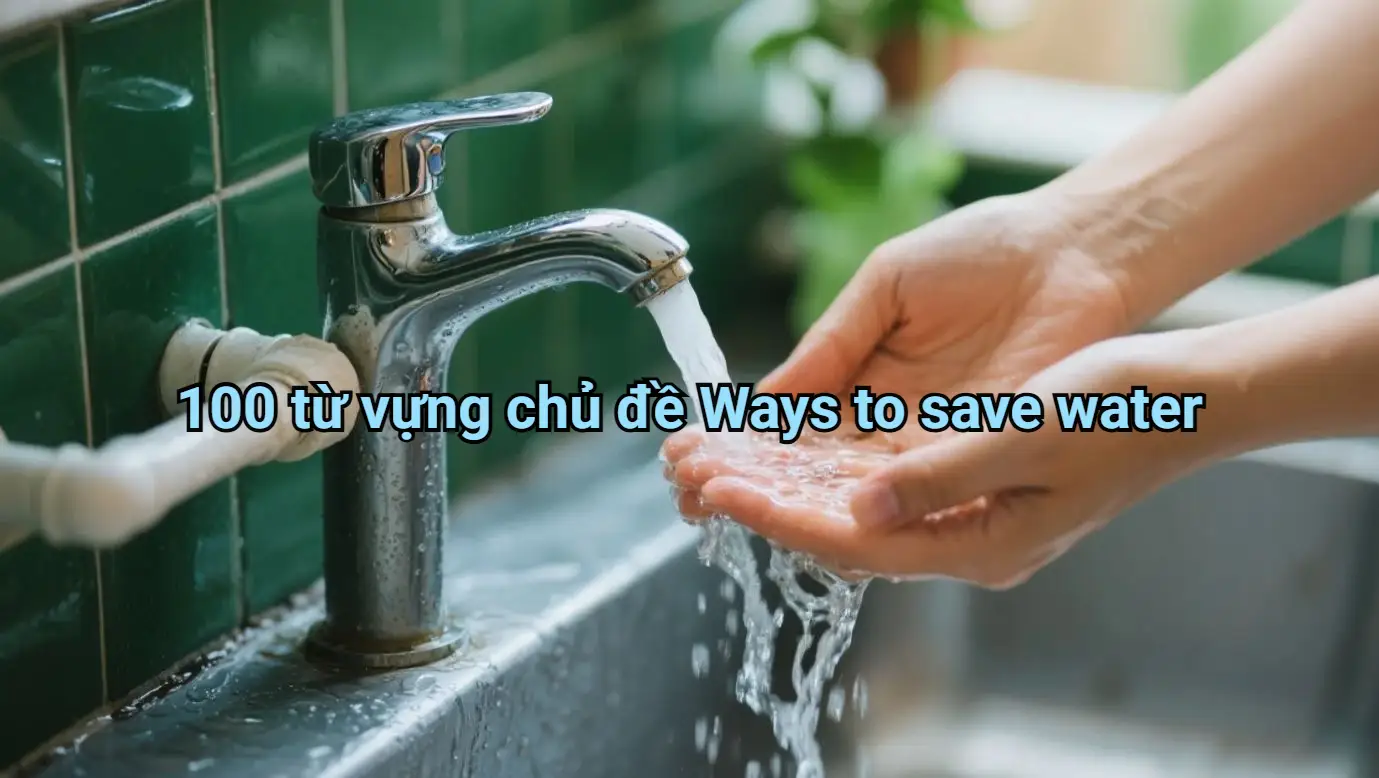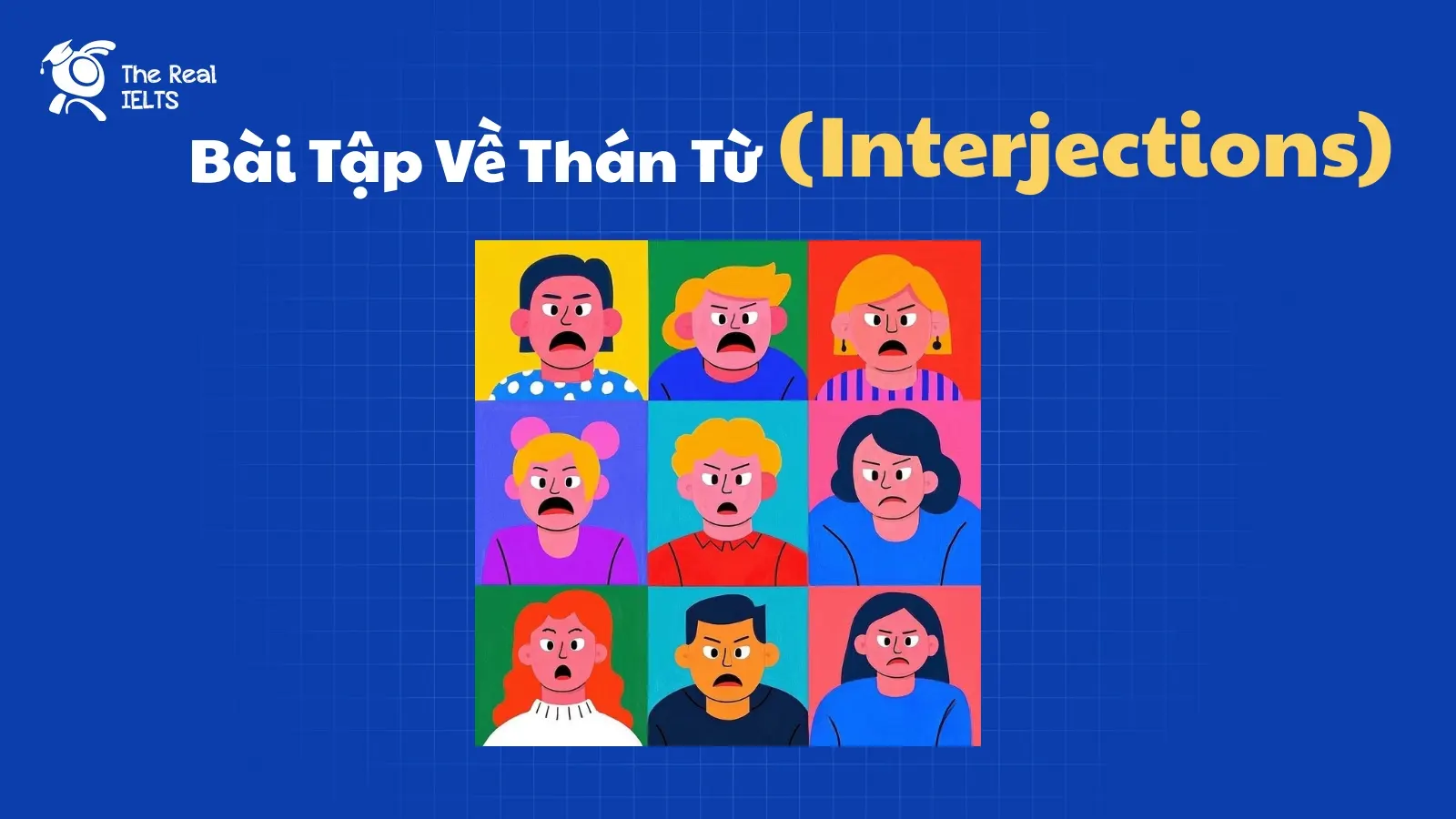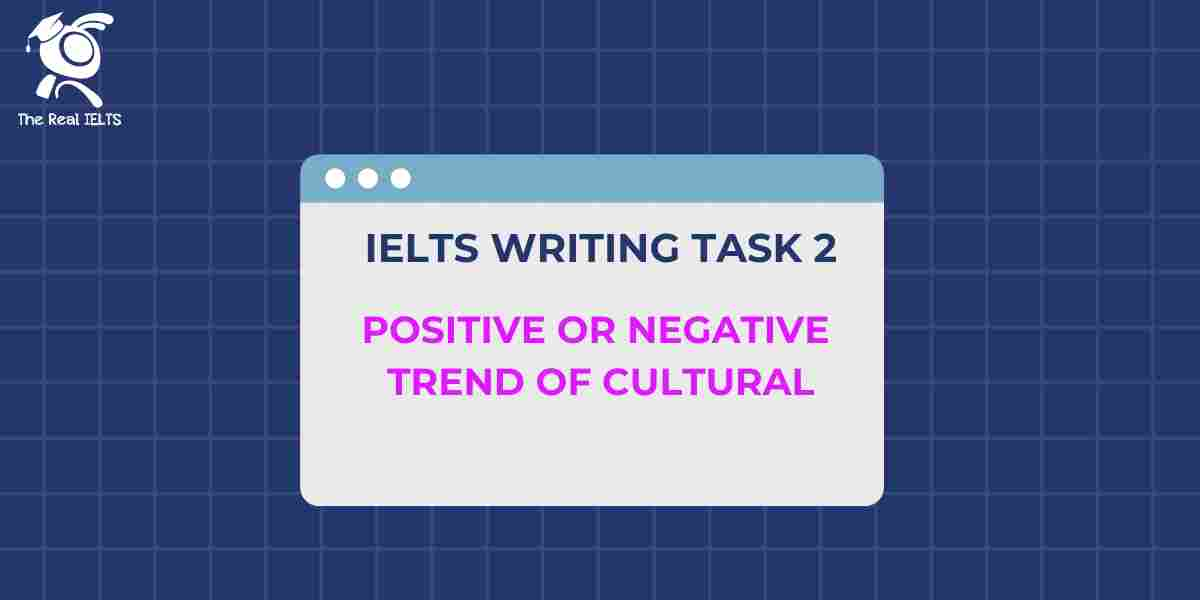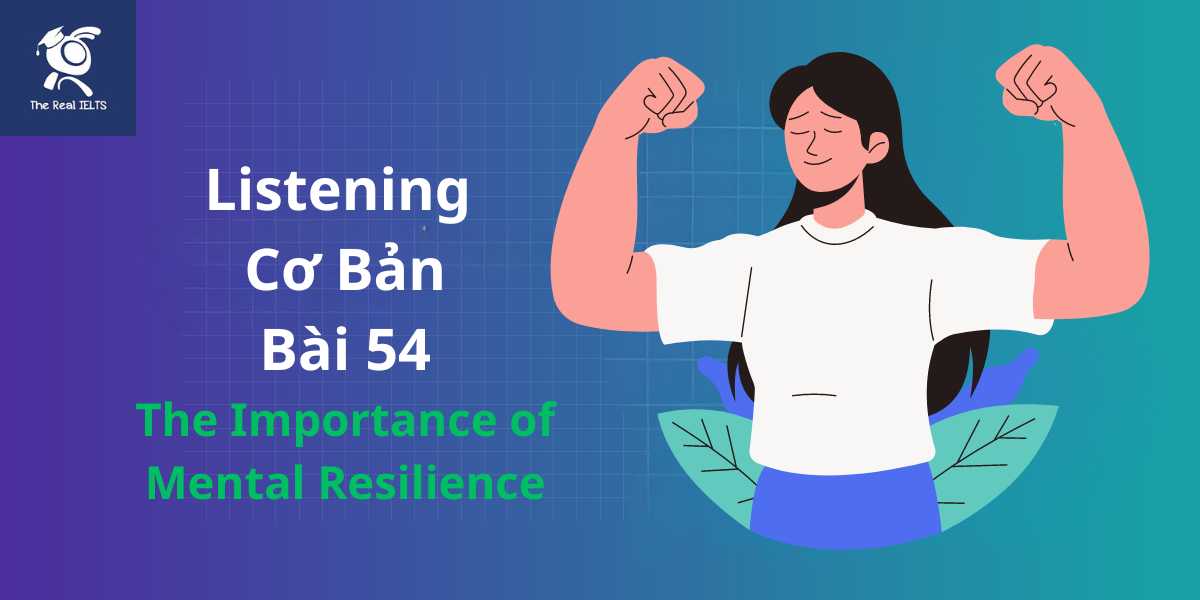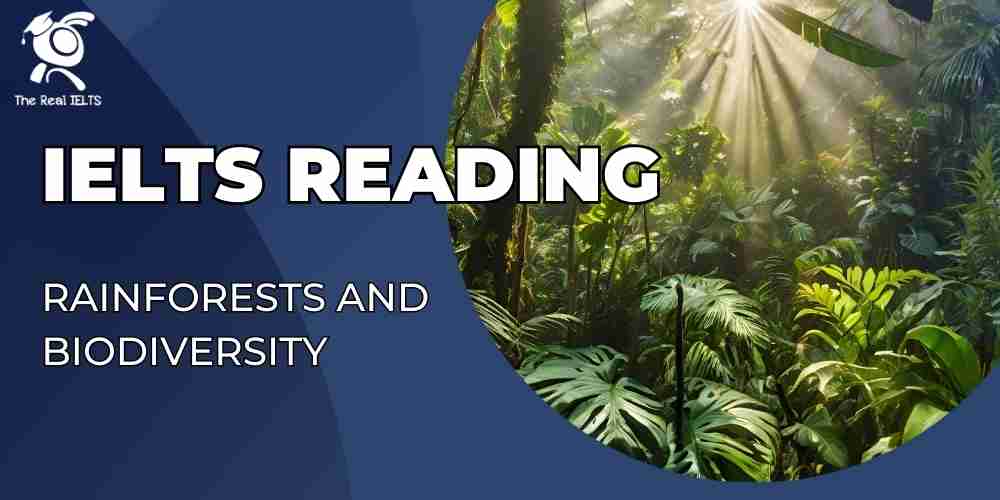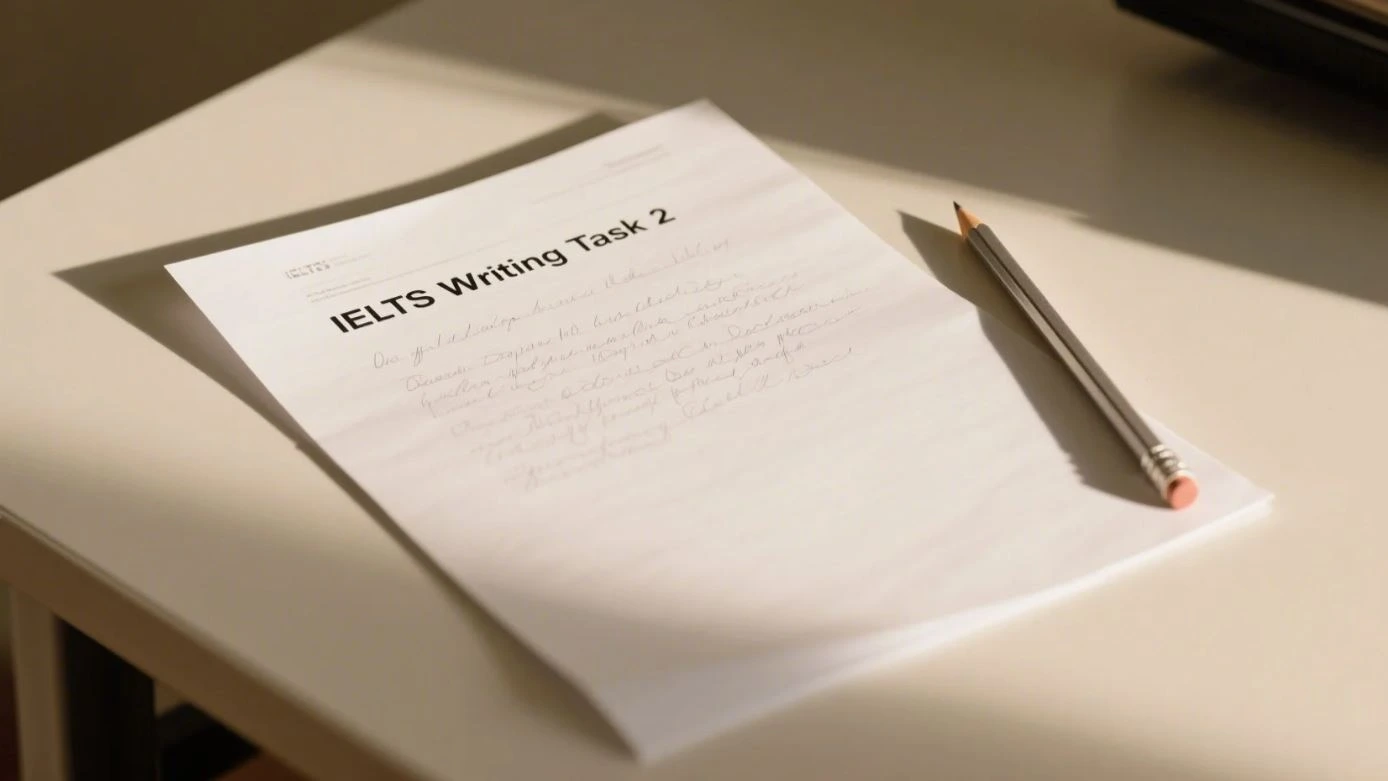Đề bài IELTS Writing task 2 dạng 2-Part demand for sustainable fashion
You should spend about 40 minutes on this task
There is an increasing demand for sustainable fashion. What are the reasons for this? How can people research this?
Write at least 250 words.
Giải mẫu đề luyện thi IELTS Writing
The demand for sustainable fashion has grown significantly in recent years. This trend is driven by various factors, and understanding how to effectively research it can help individuals make informed decisions. While many people advocate for sustainable fashion due to its environmental and ethical benefits, others may be skeptical due to perceived challenges in verifying sustainability claims. This essay will explore the reasons behind the rising demand for sustainable fashion and suggest ways for people to research this trend effectively.
One of the primary reasons for the increased interest in sustainable fashion is heightened environmental awareness. Consumers are increasingly concerned about the negative impacts of fast fashion, such as pollution, waste, and resource depletion. As a result, they are seeking alternatives that promote eco-friendly practices, such as using organic materials and reducing carbon footprints. Additionally, the ethical treatment of workers in the fashion industry has gained more attention. Many consumers now prefer brands that prioritize fair wages, safe working conditions, and transparency in their supply chains. These factors have collectively fueled the demand for fashion that aligns with ethical and environmental values.
However, despite the benefits of sustainable fashion, some people question whether all “sustainable” products truly live up to their claims. Greenwashing—when companies deceptively market their products as eco-friendly—remains a significant challenge. This skepticism highlights the need for thorough research before purchasing. To investigate whether a fashion brand is genuinely sustainable, people can start by looking for certifications such as GOTS (Global Organic Textile Standard) or Fair Trade labels. Additionally, consumers can consult trusted websites and apps that review fashion brands based on criteria like material sourcing, labor practices, and environmental impact.
Social media platforms and online communities also offer valuable insights. Following influencers or experts who focus on sustainable fashion can help individuals stay updated on credible brands and spot those engaging in greenwashing. Furthermore, reading reviews and engaging in discussions on forums can provide first-hand experiences from other consumers who have tried sustainable products.
In conclusion, the growing demand for sustainable fashion is largely driven by environmental concerns and ethical considerations. While these motivations are compelling, there is also a need for caution due to the potential for misleading sustainability claims. By conducting careful research through certifications, expert reviews, and community input, consumers can make informed choices that align with their values. Thus, while supporting sustainable fashion is beneficial, critical research remains essential.
Thống kê cấu trúc câu và cấu trúc ngữ pháp
- Cấu trúc câu đơn:
- “The demand for sustainable fashion has grown significantly in recent years.”
- “This skepticism highlights the need for thorough research before purchasing.”
- Cấu trúc câu ghép:
- “Consumers are increasingly concerned about the negative impacts of fast fashion, such as pollution, waste, and resource depletion.”
- “These factors have collectively fueled the demand for fashion that aligns with ethical and environmental values.”
- Cấu trúc câu phức:
- “While many people advocate for sustainable fashion due to its environmental and ethical benefits, others may be skeptical due to perceived challenges in verifying sustainability claims.”
- “To investigate whether a fashion brand is genuinely sustainable, people can start by looking for certifications such as GOTS (Global Organic Textile Standard) or Fair Trade labels.”
- Cấu trúc câu ghép phức:
- “Following influencers or experts who focus on sustainable fashion can help individuals stay updated on credible brands and spot those engaging in greenwashing.”
Cấu trúc ngữ pháp nổi bật:
- Mệnh đề nhượng bộ:
- “While many people advocate for sustainable fashion due to its environmental and ethical benefits, others may be skeptical…”
- Mệnh đề quan hệ:
- “Consumers are increasingly concerned about the negative impacts of fast fashion, such as pollution, waste, and resource depletion.”
- “Following influencers or experts who focus on sustainable fashion can help…”
- Cấu trúc so sánh:
- “Consumers now prefer brands that prioritize fair wages, safe working conditions, and transparency in their supply chains.”
- Cấu trúc bị động:
- “The ethical treatment of workers in the fashion industry has gained more attention.”
Từ kết nối các câu và các đoạn:
- Từ nối chỉ sự thêm ý:
- “Additionally”
- “Furthermore”
- Từ nối chỉ sự đối lập/nhượng bộ:
- “However”
- “While”
- Từ nối chỉ lý do/kết quả:
- “As a result”
- “Thus”
- Từ nối chỉ mục đích:
- “To investigate”
- Từ nối chỉ sự liệt kê:
- “Such as”
- “For example”
Các từ vựng tiếng Anh cần lưu ý trong bài viết
- Sustainable fashion: Thời trang bền vững
- Demand: Nhu cầu
- Environmental awareness: Nhận thức về môi trường
- Fast fashion: Thời trang nhanh
- Pollution: Ô nhiễm
- Waste: Chất thải
- Resource depletion: Sự cạn kiệt tài nguyên
- Eco-friendly practices: Các phương pháp thân thiện với môi trường
- Ethical treatment: Đối xử đạo đức
- Fair wages: Mức lương công bằng
- Supply chains: Chuỗi cung ứng
- Transparency: Tính minh bạch
- Greenwashing: Làm xanh giả tạo (đánh lừa rằng sản phẩm thân thiện với môi trường)
- Certifications: Các chứng nhận
- GOTS (Global Organic Textile Standard): Tiêu chuẩn Dệt May Hữu Cơ Toàn Cầu
- Fair Trade labels: Nhãn hiệu Thương mại Công bằng
- Trusted websites: Các trang web đáng tin cậy
- Material sourcing: Nguồn gốc nguyên liệu
- Labor practices: Các thực hành lao động
- Environmental impact: Tác động môi trường
- Social media platforms: Các nền tảng mạng xã hội
- Influencers: Người có ảnh hưởng
- Credible brands: Thương hiệu đáng tin cậy
- Greenwashing: Làm xanh giả tạo (nhắc lại)
- Certifications: Các chứng nhận (nhắc lại)
- Expert reviews: Các đánh giá của chuyên gia
- Community input: Đóng góp từ cộng đồng
- Informed choices: Lựa chọn có thông tin
- Align with: Phù hợp với
- Critical research: Nghiên cứu kỹ lưỡng
Đọc thêm bài viết: Cách làm bài thi IELTS Writing Task 2.


